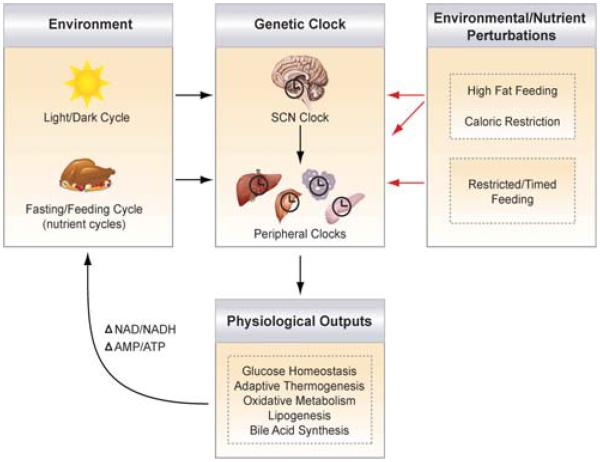Figure 1.
Interplay between clock, environment, and nutrient availability. The main pacemaker clock within the suprachiasmatic nucleus (SCN) receives photic input from the environment and synchronizes downstream extra-SCN and peripheral metabolic oscillators to optimize energy storage and utilization pathways (listed as physiological outputs). The daily cycles of fasting and feeding entrain the peripheral clocks, perhaps through changes in glucose, fatty acids, NAD/NADH and AMP/ATP ratios, or hormones (peptidergic or steroidal). Changes in food availability, such as in conditions of high-fat feeding, caloric restriction, and restricted feeding, also affect the clock. Although restricted feediing entrains just peripheral clocks, a hypocaloric diet (caloric restriction) has been shown to entrain both peripheral and SCN clocks. Thus, the circadian network optimizes the timing of downstream metabolic processes to coordinate with daily light–dark cycles and the nutrient millieu.

